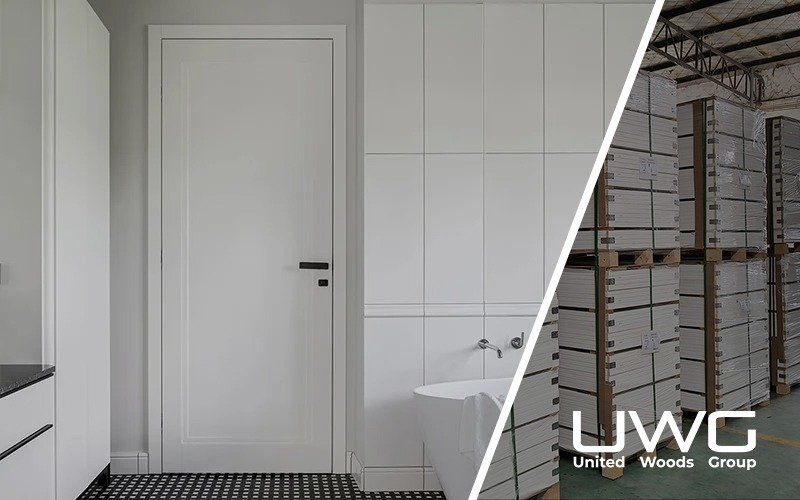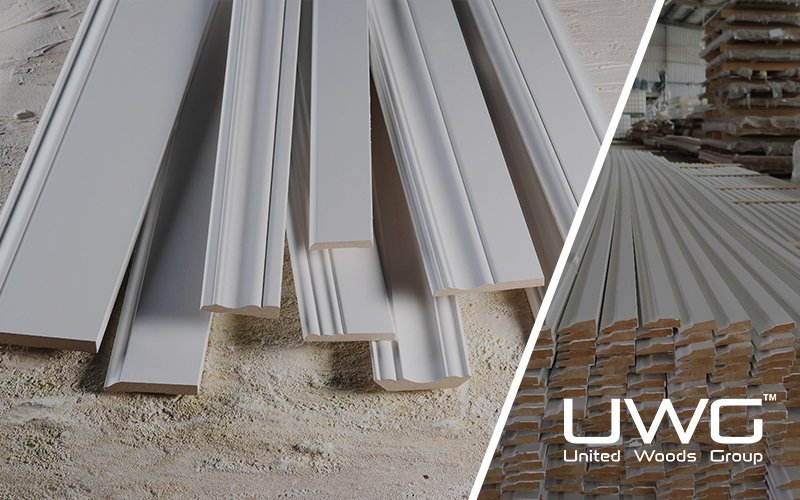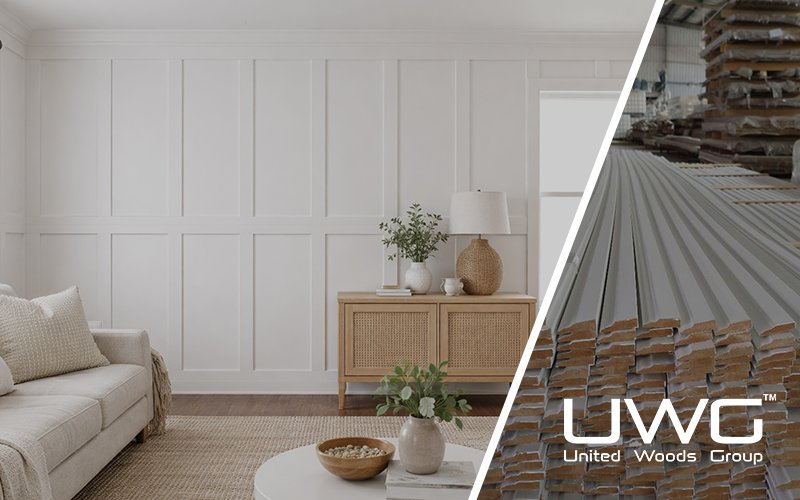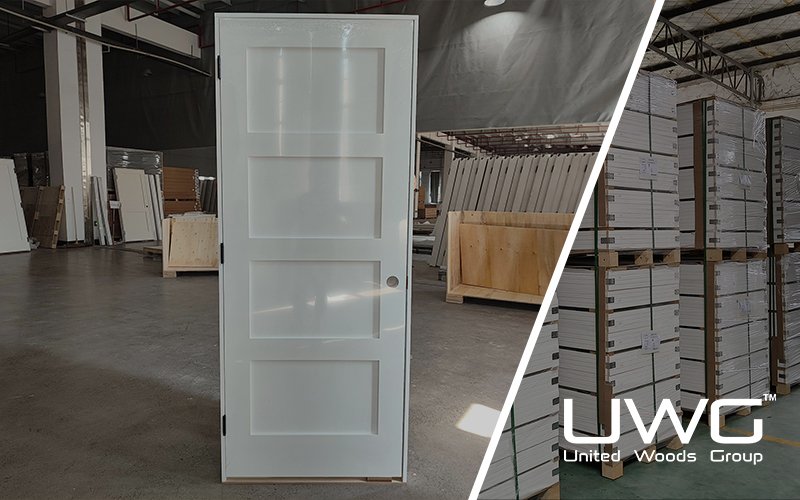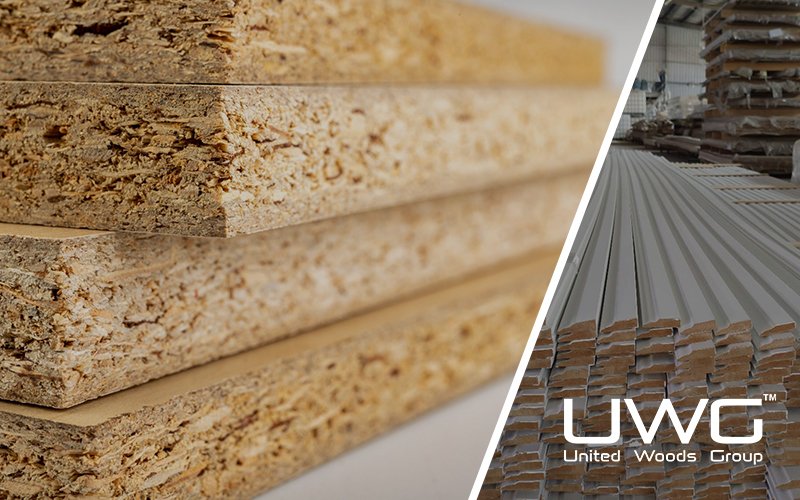Shaker doors are beloved for their simple elegance and ability to fit into multiple design styles. For wholesalers and builders, understanding how they complement modern farmhouse and transitional styles not only offers clients timeless appeal but also helps maintain a competitive edge in the fast-evolving home design market.
Shaker doors suit modern farmhouse and transitional styles thanks to their clean lines, recessed panel design, and versatile finish options. In modern farmhouse spaces, they add rustic charm without feeling outdated; in transitional interiors, they bridge traditional and contemporary elements, delivering a balanced and enduring aesthetic. Their adaptability makes them a smart, long-term choice for both residential and commercial projects.
Let’s explore how Shaker doors elevate different interiors, the styles they match best, and how wholesalers and builders can leverage them for both beauty and market value.
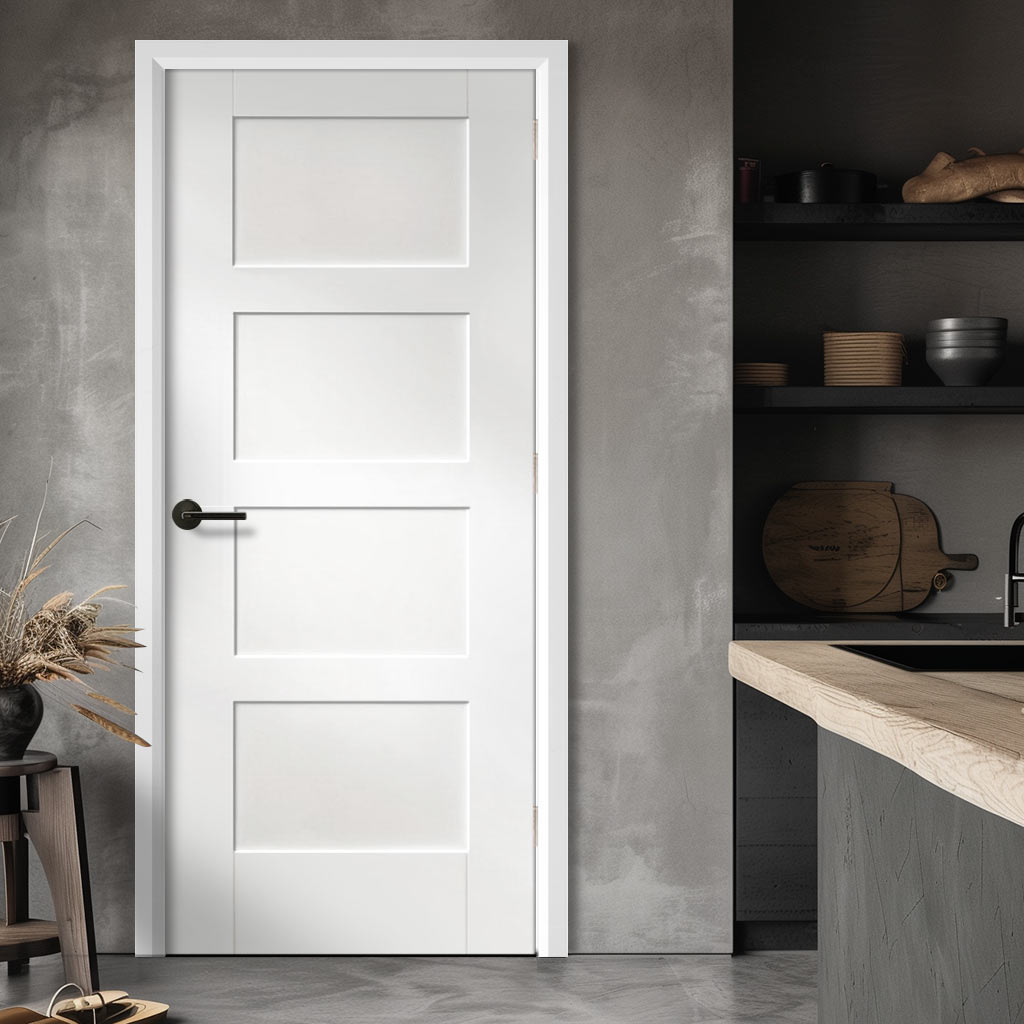
What Styles Do Shaker Doors Work With?
Shaker doors are highly adaptable — their minimal design fits almost any interior style. The most notable pairings include:
- Modern Farmhouse – Ideal in matte white, warm gray, or distressed wood finishes; they create a cozy yet clean foundation. Pair with barn-style pulls or vintage hardware to enhance farmhouse charm.
- Transitional Style – Balances classic and modern elements; works well with brushed nickel or matte black hardware to appeal to younger buyers while retaining traditional warmth.
- Traditional Style – Choose stained oak or walnut with ornate handles for an elegant, timeless feel.
- Minimalist Style – Opt for handleless flat panel cabinet door styles for a crisp, streamlined look.
For builders: Using one core Shaker model with multiple finish options can meet diverse style demands across different projects without creating ordering or inventory complexity.
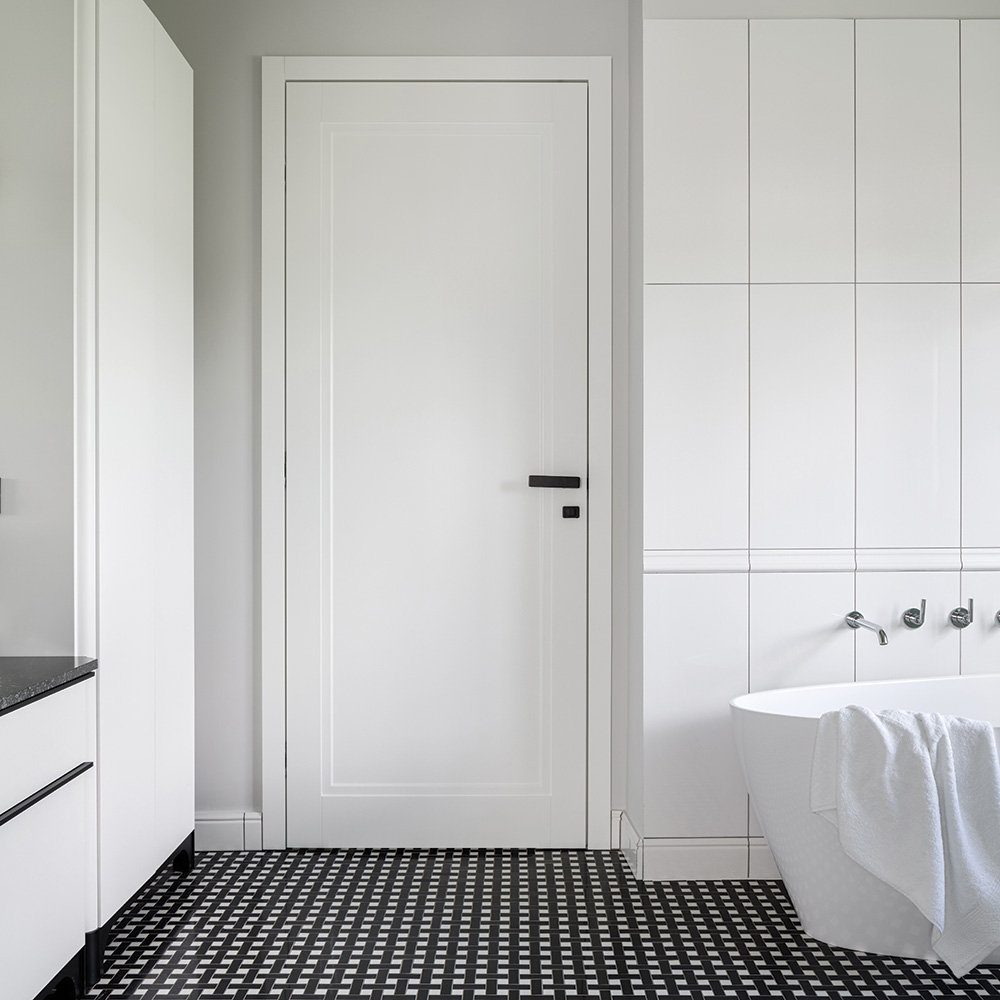
Are Shaker Cabinets Modern or Farmhouse?
The truth is, Shaker cabinets belong to both — and more.
- In modern farmhouse kitchens, they can feature beadboard details, rustic finishes, and open shelving for added charm. Soft off-white paired with natural wood creates a warm yet refined atmosphere.
- In modern spaces, the same Shaker door can be painted deep charcoal, matte navy, or pure white with minimalist hardware for a sleek, upscale look.
Some brands successfully market the same product as “rustic,” “classic,” or “modern” depending on the buyer’s needs.
Builder advantage: Using the same Shaker style across a development while varying colors and hardware simplifies ordering and provides each client with a personalized look.

What’s the Difference Between Shaker and Transitional Style?
Shaker refers to a door design — a flat center panel with clean, square edges. Transitional style is a design approach that blends the warmth of traditional design with the clean lines of modern aesthetics.
Here’s how they work together:
- Shaker doors → Provide structure and timeless form.
- Transitional decor → Refreshes the space with trending colors, lighting, and layouts.
When builders use Shaker doors in transitional kitchens, they offer homeowners a design that is on-trend yet unlikely to go out of style — a major selling point in competitive markets.

Why Are Shaker Doors Timeless?
They remain a favorite in design trends for three main reasons:
- Simplicity – Clean lines adapt to ornate or minimal environments.
- Practicality – Easy to clean, easy to repair, and compatible with various hinge types.
- Versatility – Available in wood, MDF, and painted finishes, aligning with popular flat panel cabinet door styles.
Because they can adapt to changing color and hardware trends, Shaker doors rarely look dated.
For builders: This means greater design consistency across projects, simplified procurement, and the ability to satisfy varied client preferences without complicating material sourcing or increasing project management workload.
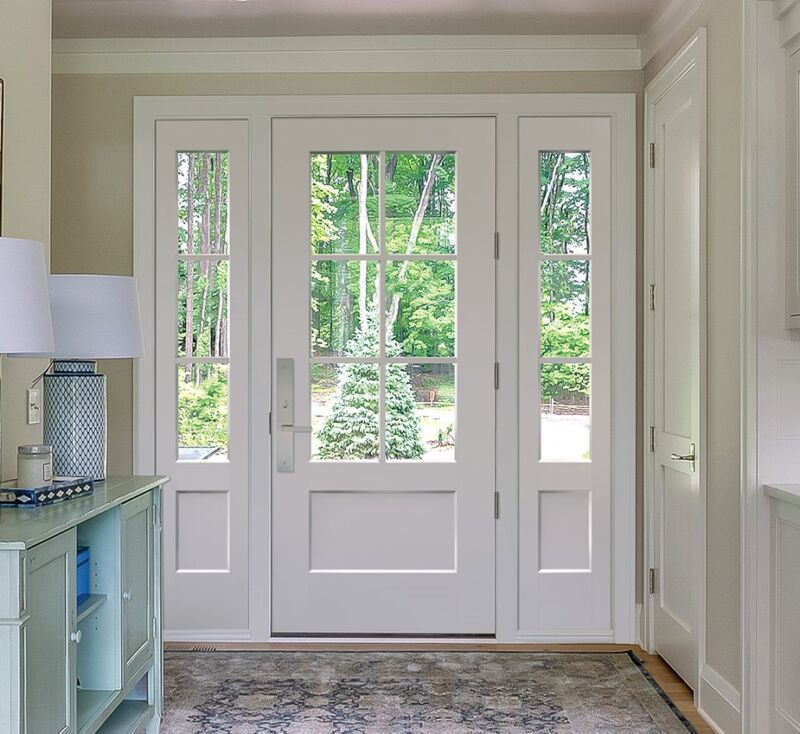
Design Tips for Wholesalers and Builders
For Modern Farmhouse Projects:
- Choose soft whites, creams, or weathered grays.
- Use oil-rubbed bronze or antique brass hardware for warmth.
- Add open shelving and natural materials for a complete look.
- Pair with farmhouse sinks and reclaimed wood accents for authenticity.
For Transitional Projects:
- Use two-tone cabinetry (e.g., white uppers with navy lowers).
- Choose minimalist handles in matte black or brushed nickel.
- Keep countertops light for contrast and balance.
- Incorporate stone backsplashes and metallic accents for depth.
Builder tip: Focus on neutral finishes as your base option for cabinetry and doors, then offer clients upgrades through hardware, countertops, backsplashes, or other accents. This approach streamlines procurement, keeps material costs predictable, simplifies project coordination, and still allows each homeowner to personalize their space, enhancing satisfaction while maintaining efficiency across multiple builds.

How to Pitch Shaker Doors to Today’s Buyers
When presenting to contractors, designers, or homeowners, emphasize:
- Design flexibility – Works with farmhouse, modern, and many other styles.
- Durability – A safe choice for buyers worried about trends fading quickly.
- Customization – Multiple finishes, materials, and hardware options (e.g., Dura Supreme).
- Value – Mid-range price point with a high-end look.
Marketing ideas:
- Create a “one door, multiple looks” display, showing the same Shaker door in modern farmhouse, transitional, and minimalist settings.
- Offer finish and hardware sample boards.
- Share case studies where Shaker doors increased buyer interest in properties.
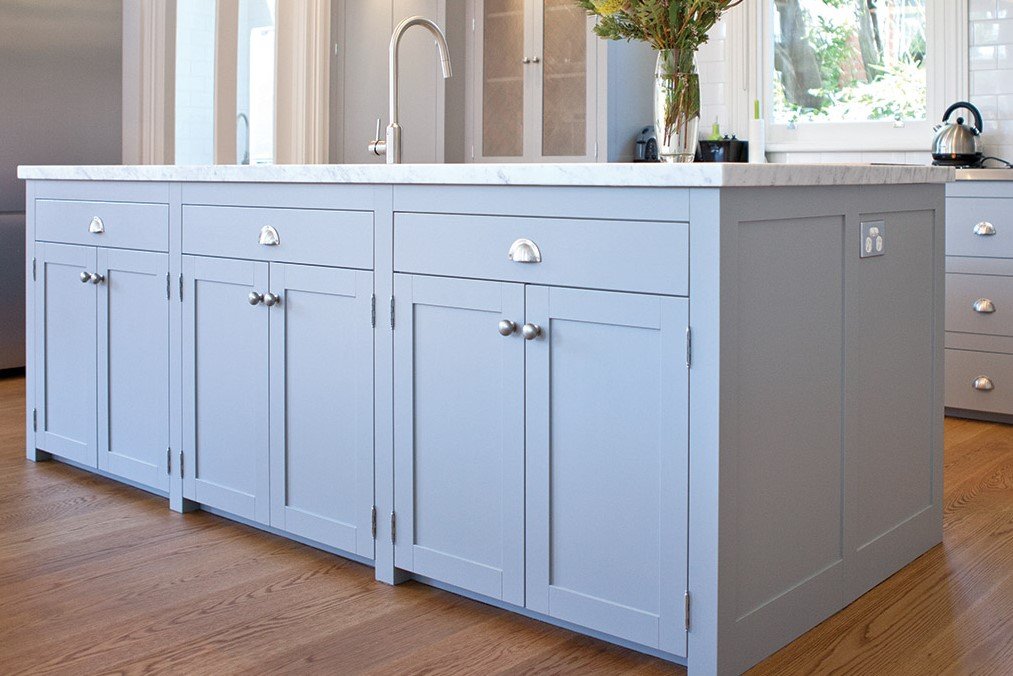
Practical Applications
For Builders:
- Use Shaker doors across developments, adjusting finishes to target entry-level, mid-range, and premium buyers.
- Offer Shaker as the “standard” with upgrade options to control construction costs.
For Wholesalers:
- Maintain a steady Shaker supply chain — it sells year-round and is not seasonal.
- Educate retail partners on pairing Shaker doors with trending colors and hardware to boost sales.
Conclusion
Shaker doors remain popular because they combine beauty, flexibility, and value. For wholesalers and builders, mastering their application in modern farmhouse and transitional styles means offering products that meet current demands and stand the test of time. If you have any problems, feel free to contact us.

